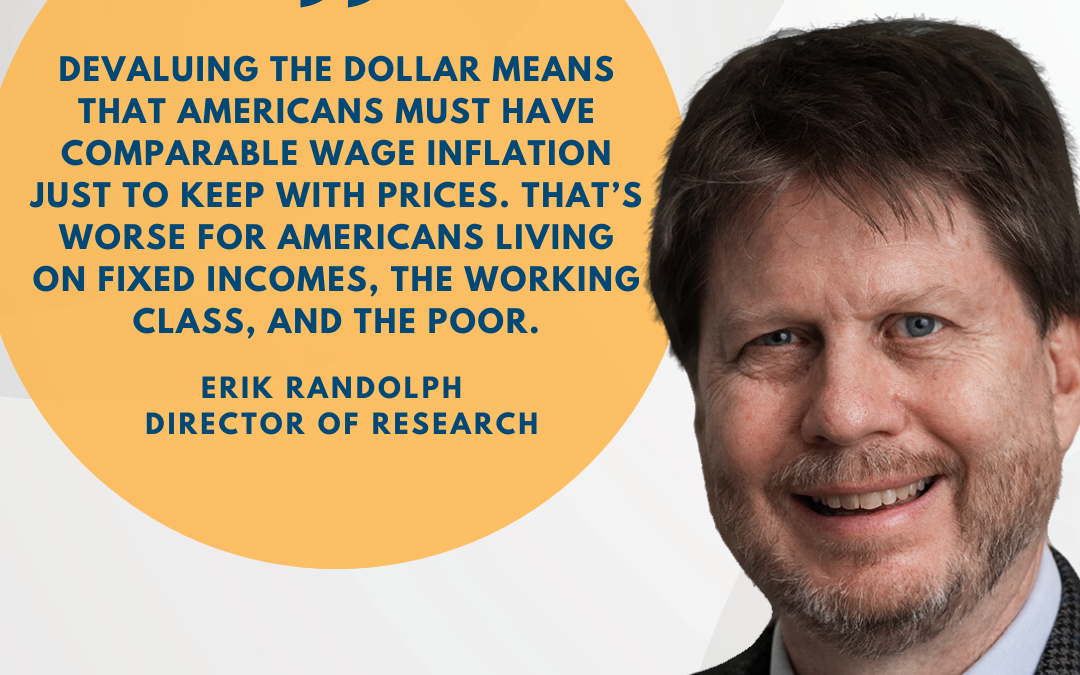
Businesses fleeing cities over crime is a warning sign we can’t ignore

Businesses fleeing cities over crime is a warning sign we can’t ignore
Key Points
- Crime is causing businesses to flee communities already experiencing a lack of opportunity.
- As businesses flee high-crime areas, there is a negative impact on the price and availability of goods in underserved communities
- Communities will see healthcare and community health impacts from this loss of retailers.
We keep hearing about it: Businesses and retailers fleeing downtown areas—or entire city communities—due to violence, theft, and crime. It happened in Portland, Chicago, Los Angeles, and San Francisco, but it should be a warning to other cities around the country.
The exodus of companies due to crime creates a downward spiral for communities already experiencing a lack of opportunity.
LIMITED ACCESS AND HIGHER PRICES
When businesses flee a community they take convenience, jobs, and access to goods. The result is a market crisis where demand stays steady while limited access increases the price of goods and incomes stagnate or decrease.
The inability to access goods at reasonable prices is a direct response to the loss of competition. No longer are you able to buy essentials at market value but instead you pay premium prices as supply is constrained. This is no different than what we experienced nationally over the past few years as supply constraints pushed the price of gas, milk, and other essentials higher.
This limitation of access to transportation, clothing, and food will have consequences in other areas of community health and opportunity.
THE IMPACT ON HEALTHY FOOD OPTIONS
Take the limited access to food issue. We know that lack of healthy food options in underserved communities is an ongoing problem. Cheaper food options, which are “shelf-stable,” tend to be less healthy. This creates a downward trend of poorer health outcomes like obesity resulting in a rise in healthcare costs.
Communities with a lack of affordable healthy food options get stuck in a cycle where they are less healthy, less likely to work, and more dependent on temporary, less-reliable healthcare. When we see stores closing or moving out of a community due to violence, we see smaller businesses that cannot afford to absorb the costs of throwing out healthier foods. The result is that these businesses tend to stock less perishable and more unhealthy items on their shelves.
This means that these communities become more dependent on systems and services to survive long term. Our safety-net programs are designed to be temporary systems that catch people (or even communities) at the point of tragedy to help them get back on their feet. But when opportunity flees, these individuals are left hopeless, looking for what’s next. They become trapped in their circumstance.
“…communities become more dependent on systems and services to survive long term.”
“…communities become more dependent on systems and services to survive long term.”
CRIME IS THE TRUE THIEF
Crime and the unwillingness to address crime robs communities of value. It makes these communities into societal pariahs.
Not only are these communities unable to access adequate goods, they are unable to find local jobs and services. When companies flee an area, they take hundreds of entry to mid-level jobs. In a community that is reliant on these types of job opportunities, it once again means they have no path out of their current situation.
In his study of ethics, Immanuel Kant asserted that “if you steal from him, you steal from yourself.” It’s a philosophical acknowledgment that crime steals from the entire community. It takes livelihood, property, and security away from everyone in the community including the perpetrator because it destabilizes.
While it’s hard for some to have sympathy for a mega-corporation needing to close a store, it is a warning sign to the health of that community. Vibrant communities, which we often speak of here at the Georgia Center for Opportunity, are ones that attract opportunities. They are communities so lively that everyone, even mega-corporations, wants to be a part of them. As we begin to see these companies leave a community it catches headlines, but the real-world impact is much more than a temporary blip in our newsfeed.
We must address crime in communities to keep opportunity open to all.
Contact Us
333 Research Court, Suite 210, Peachtree Corners, GA 30092. | Phone: 770-242-0001
Terms & Conditions | Privacy Policy










